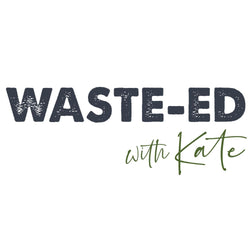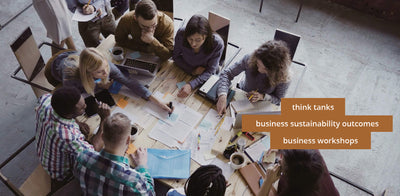Shopping Smarter – 7 Ways to Avoid the waste
Supermarkets banning plastic bags is a great first step, but what about the endless amount of plastic that food is actually packaged in? The bad news is this probably isn’t going to change any time soon, the good news is there are plenty of things you can start doing today to help!
Why is there so much plastic?
Short answer: it’s cheap. Plastic is a readily available and effective material for manufacturers to package food in, allowing them to maintain a competitive price point. The food packaging industry is worth an estimated NZD $410 Billion with its current plastic-heavy standards, so an eco-friendly overhaul – that would cost a lot to do – isn’t necessarily a top priority (Grand View Research, 2018).
It can also be a strategy to make you buy more. Take fresh produce, for example, there is often no need at all for things to be packaged in plastic bags or polystyrene trays. Sure, it can help to keep food fresh or hygienic, but fruit and veg can (and should) be washed anyway. A lot of the time fresh produce is packaged in plastic to force you to buy more; while it’s better to buy loose mushrooms and put them in a reusable produce bag, it’s easier to grab a plastic bag of them – even if it’s more than you need. The manufacturers don’t care if you don’t use them all, they only care about you buying more.

While there is definitely growing demand for eco-friendly packaging options, it’s slow-going in terms of actual change. It’s even expected that if there were a significant uptake in eco-friendly packaging alternatives, plastic food packaging would actually experience rapid growth as plastic-packaged products could be priced far more competitively than their eco-friendly alternatives, saving the end consumer money (Grand View Research, 2018). All of which makes more sense for companies that aren’t necessarily concerned with environmental issues.

Why is there so much packaging?
Packaging is advertising. Protecting food isn’t the sole function of food packaging, it’s also one of the most important marketing tools for a brand. It’s estimated that 70% of purchase decisions are made at the retail shelf, meaning consumers are heavily influenced and persuaded by what they see on a supermarket shelf (The Balances MB, 2018).
Brands spend a lot of money making sure their product stands out from others and a huge amount of thought is put into its size, shape, colour, material, and messaging. It makes sense then, that things like cereal are packaged inside a plastic bag and then inside a cardboard box; they take up more space on the shelf, and the packaging itself is larger, giving them more design space to work with. This is also why manufacturers often change the design of their packaging; “new look, same great taste” is an effort to rebrand an item or grab consumers attention if sales are declining.

Why are there so many single-use/ single-serve products?
The rise of single-serve packaging can be attributed to factors such as a growing population, rising average disposable income, quickening pack of life, changing eating habits, and shrinking households (Grand View Research, 2018). There are a growing number of families or individuals that are strapped for time rather than cash and are willing to pay more for products that are more convenient rather than products that are better for the environment and your wallet but take a bit more effort. Most people live very busy lives these days and want to save as much time as possible. Of course, it’s easier just to chuck a couple of single-use baby food pouches in your bag rather than buy/make a larger amount and divvy it up into reusable containers. The same can be said for just about any food product.

One of the most successful types of single-use/single-serve products are baby food items – they’ve fulfilled parents’ desire for convenience and more spare time and capitalised on it until this has pretty much become the norm.

You can buy reusable food pouches that are made from heavy-duty BPA-free plastic
– they’re freezable, dishwashable and last for years.
Pictured: Kai Carrier Reusable Food Pouches
Companies didn’t just start packaging things in single-serving sizes for no reason, they saw consumers growing desire to save time, and they ran with it. If we, as consumers, didn’t buy those products, they would’ve stopped making them that way – there’s no point in continuing to make something that no one’s buying. It’s easy to think that something you do won’t make a difference if everyone isn’t doing it, but if we all thought like that, one thing’s for certain; nothing will ever change. Even if you don’t feel like you’re saving that much from landfill today, over the weeks, months, and years, it will really add up.
What can you do?
While a drastic change from the manufacturer’s end isn’t likely to happen soon, there is a lot we can do as consumers to influence change. Ultimately, they are reliant on us. If consumers aren’t buying a certain product, or there is enough demand for change, they won’t ignore it. Therefore, consumers actually have a fair bit of power.
Here are seven things you can do today to reduce packaging waste:
- Buy bulk-sized productsA pack of 6 double-length toilet paper rolls uses less packaging than a 12 pack of regular as there is less surface area to cover – this is the same with a lot of other things such as milk, i.e. one 2L bottle uses less plastic packaging than two 1L bottles.
- Repack food yourselfIt may take more time but buying larger quantities of food items and packing them into reusable containers yourself reduces a whole lot of food waste and will generally save you money – think one large packet of potato chips vs. ten individual packs of chips.
- Look at volume or servings per package rather than just physical package sizeTwo differently sized boxes of cereal may actually contain the same amount of food – choose the one with the smallest packaging.
- Make what you can yourselfThis is easier said than done, especially with most people’s busy schedules, but making your own baby food muffins, plant milk etc. is not only better for the environment, but it’s usually better for you too. The easiest way to make your own baby food is just to give them what you’re having for dinner! Maybe just mash it up a bit or chuck it in the blender first, then pop it in a reusable container or pouch.
- Buy food packaged in glass rather than plasticGlass can be recycled over and over again and not lose its integrity, whereas plastic degrades in the process, meaning there’s less of a market for recycled plastic, meaning less actually gets recycled.
- Shop with a list of just what you needThis way, you’re less likely to be persuaded on the spot by flashy packaging and buy things on an impulse.
- Buy package-free where you canAlways try to buy package-free fresh produce. Other things like seeds, nuts, grains, cereals etc. can be purchased package-free at bulk-bin stores, however, sometimes this isn’t always doable in terms of location or budget – just do what you can.
Making a difference doesn’t have to be a massive behavioural overhaul where you go completely package-free overnight, that might not be sustainable for you. It can just be about making smarter choices when shopping. Start by making one change and when that becomes second nature, move onto the next thing. Every bit counts.
Expiry Dates – what are they for?
In the past I remember looking at the best before dates and thinking that the food was off even it was just a day over the date on the packet. Therefore I would just throw it in the bin without a thought. Some of you may think I was quite naive, I was.
Then one day I found out that there are a number of different date labels that are used on food and they were confusing me. I found out that there was a big difference between a ‘use by date’ and a ‘best before date’.
With a ‘Use-by date’ food can be eaten up to the end of the ‘use-by’ date, but not after even if it looks and smells fine. This is very much referring to the safety of the food.
Where as the ‘Best Before’ date refers to the quality of the food as opposed to the food safety. With the best-before date, after the date, the food won’t be unsafe but it may begin to lose it’s flavor or texture. One exception is eggs – you should never eat eggs that have passed their best before date.
So we started being more aware of what we were buying and making sure that we purchased fresh food that we were going to eat straight away if it had a date on it instead of buying it and finding it at the back of the fridge a month later and then throwing it out.
Or we would buy it and freeze it straight away and use it when we were ready to eat it.
This Page Is Sponsored by:



